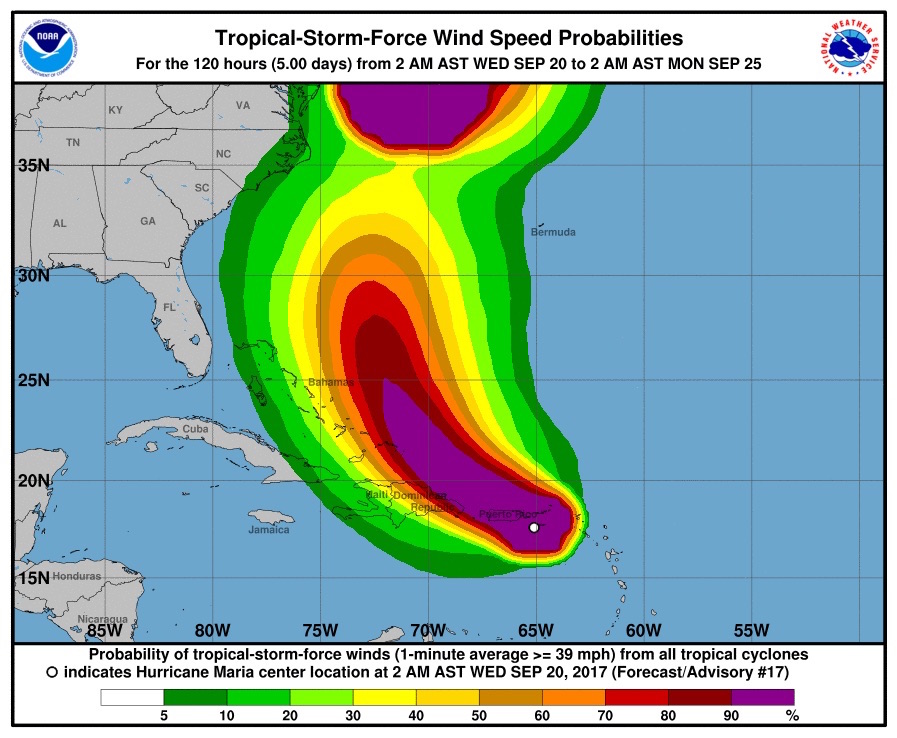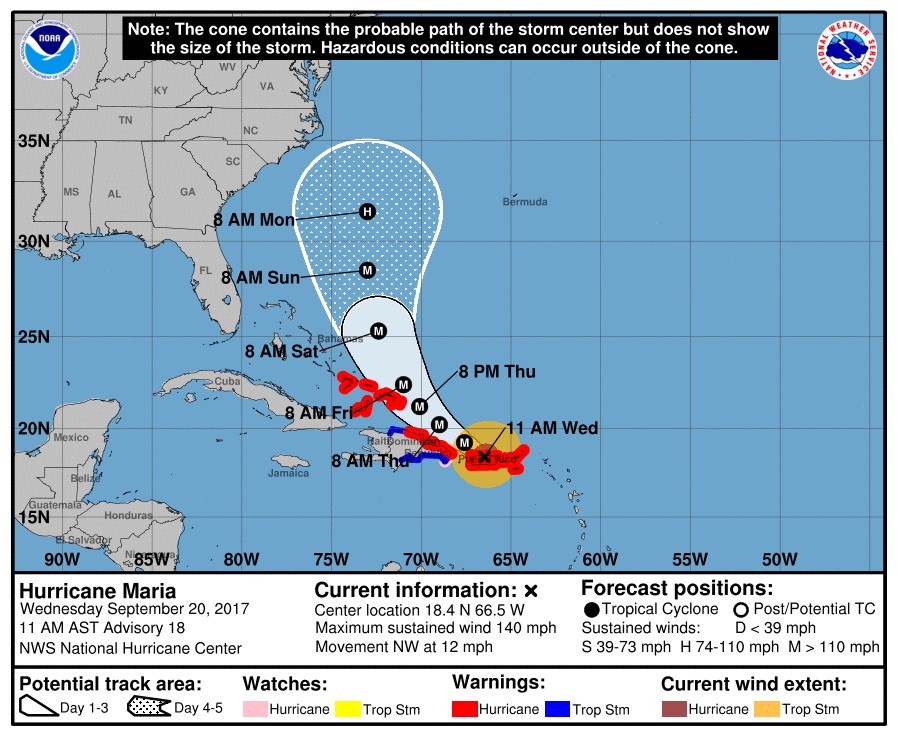Could Hurricane Maria Make Landfall in the US?

Editor's Note: Here are the latest updates on Hurricane Maria.
Hurricane Maria is wreaking havoc on Puerto Rico today, but will the storm's fierce winds make landfall on the mainland United States?
Current hurricane models say no, but the storm could still bring rain, wind, surf, riptides and clouds to certain parts of the U.S. East Coast, said Jeff Weber, a meteorologist for the University Corporation for Atmospheric Research in Colorado.
"I think the U.S. mainland is not going to be directly hit by the eye itself," Weber told Live Science. "There is still a slight change it could occur. But even if the eye itself does not make landfall on the Eastern Seaboard, there will be some impacts felt." [The 20 Costliest, Most Destructive Hurricanes to Hit the US]
Maria is currently a Category 4 hurricane, with winds near 140 mph (220 km/h) and higher gusts, according to the National Hurricane Center. The storm is moving northwest at almost 12 mph (19 km/h).
"It is starting to weaken over land, so I suspect it will come off of Puerto Rico as a Category 3," Weber said. "It is forecast to diminish in its strength after it comes off of Puerto Rico and then goes east of the Bahamas, going down to a Category 3 and Category 2 by Monday [Sept. 25]."

However, Maria's eyewall (the powerful winds surrounding the eye at the center of the hurricane) made a big jump to the south over Puerto Rico as the storm interacted with the land's topography, "and that could change its track in the coming days," Weber said. "A small change in track can lead to a big difference [in where the storm arrives] five days out."
Sign up for the Live Science daily newsletter now
Get the world’s most fascinating discoveries delivered straight to your inbox.
Once the eyewall exits Puerto Rico later today (Sept. 20), meteorologists will have a better idea about Maria's future path, Weber said.
At this point, Weber said, Maria is not expected to impact Florida, which was hit by Hurricane Irma just last week. But Maria could affect North Carolina and Virginia on Tuesday and Wednesday of next week, and it could even bring storm surges to these states if it takes a more western route, Weber said.
The hurricane is expected to miss New York and Boston, though it may brush the Canadian province of Nova Scotia and merge with the remnants of Tropical Storm Jose before going out into the Atlantic, Weber said.
Original article on Live Science.

Laura is the archaeology and Life's Little Mysteries editor at Live Science. She also reports on general science, including paleontology. Her work has appeared in The New York Times, Scholastic, Popular Science and Spectrum, a site on autism research. She has won multiple awards from the Society of Professional Journalists and the Washington Newspaper Publishers Association for her reporting at a weekly newspaper near Seattle. Laura holds a bachelor's degree in English literature and psychology from Washington University in St. Louis and a master's degree in science writing from NYU.









